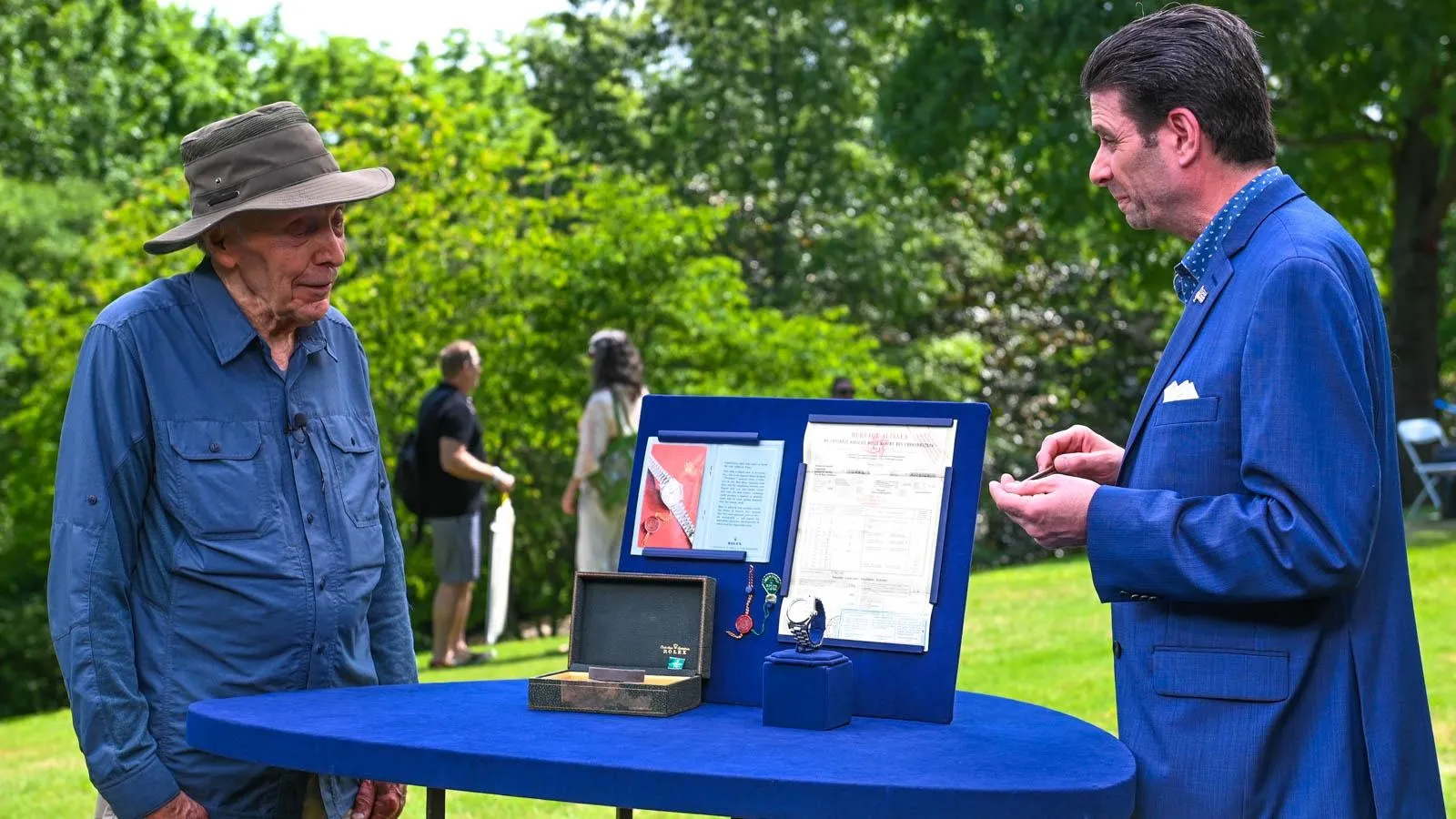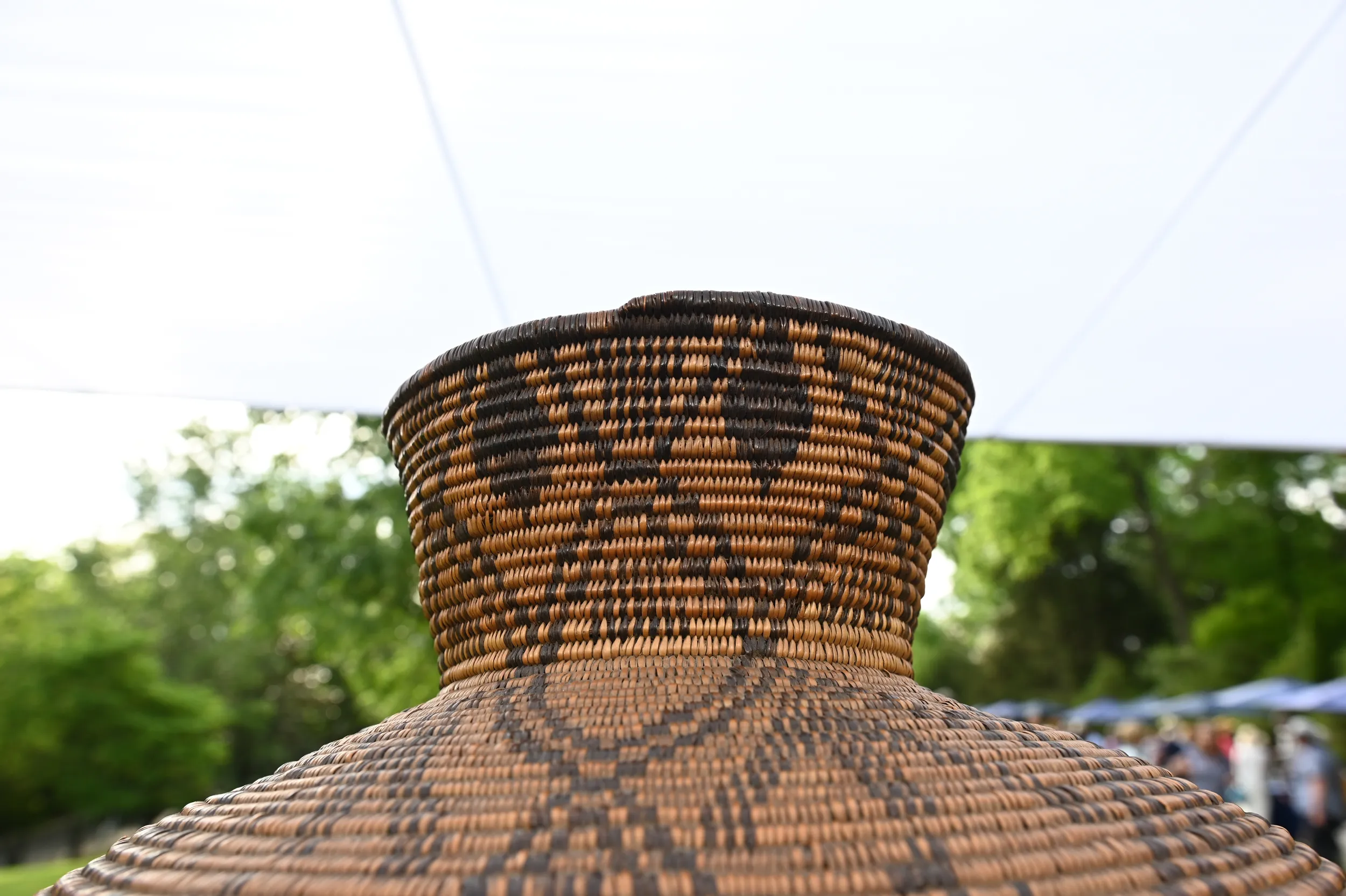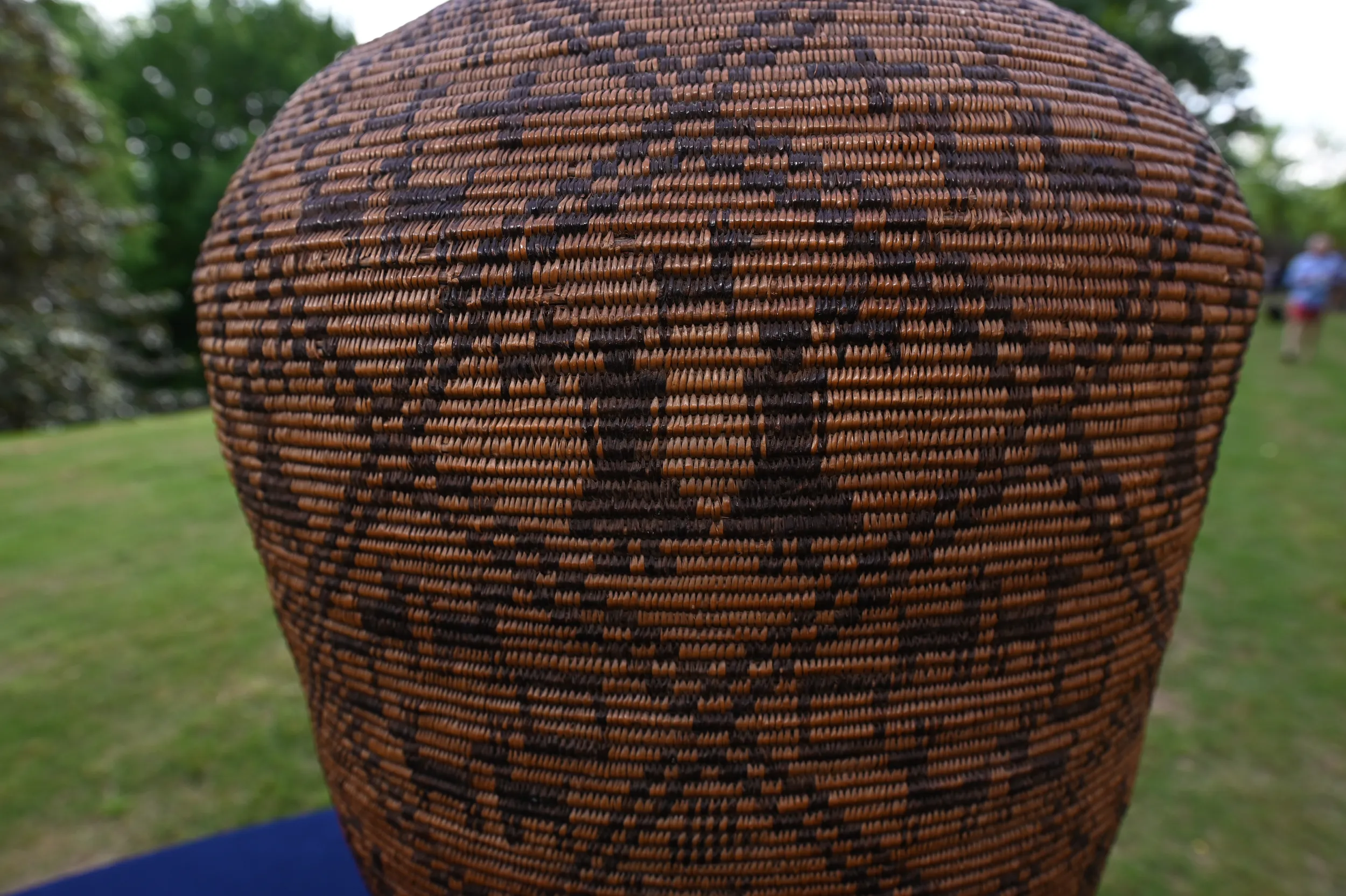GUEST: This was acquired by my wife's grandfather, who was a part-time U.S. marshal. And he was on a, uh, train in Colorado going to Illinois, where he lived. And he was quite a poker player. And evidently, the story is that he acquired this by winnings in a poker game on the train. And that was back in the 1920s. So this has been in my wife's family for, oh, about 100 years. We think it's Southwest Indian, but we're not sure.
APPRAISER: This basket was made by Apache people. They made a lot of these very large grain baskets. These were to hold corn. And they're so heavy and so big, most of them have fallen apart, so you don't see very many this scale. They're usually small ones that were sold to tourists. Was probably made around 1900, maybe a little later. They started making baskets like this after the 1880s, this scale. The Spanish called this shape of vessel an olla. It also applies to pottery. It has to do with it, it's a storage container in this shape with a narrower neck-- it's got the designs that go all the way around. The decorations are classic. It's got little men, and women, and dogs, and deer, and horses, and little squares that I expect are corrals. And then it has this overall diamond design that covers the whole thing. Most of them don't have anything like the numbers of figures that this one has. And it's a little skewed. It's a natural process of just gravity and weight. If it was used for grain, the grain, which would have been corn kernels, tends to stretch 'em out, and they get much more misshapened. This one's in pretty good shape, and anytime you weave something this big with plant fiber, it's hard to keep it perfectly straight, and it really doesn't affect the value. There's so little shift in over 100 years, that's good, it's, it's a fairly stable piece. These are rods of a plant fiber that's been wrapped with these strips. The black ones are devil's claw. All of this is hard to work, and it takes a long time just to prepare the materials to make these baskets. It has a few places where the little... We call 'em ticks, but their little strips are gone, but not a lot. Overall, it's in quite spectacular condition. When you're dealing with it, be careful, because as heavy as it is, it could tear itself apart. So you need to hold it by the sides and keep it well supported when you move it or do anything with it. If it came up for auction today, I would expect it to bring $30,000 to $40,000. Which, you know, is a pretty big difference from the card game in the 1920s. (laughing)
GUEST (laughing): That's right.













